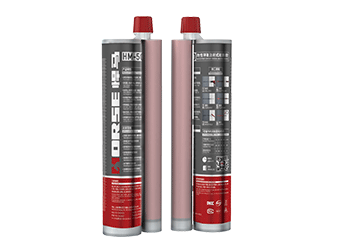Solutions
Horse Construction offers full range of structural strengthening materials with technical supports, documentation supports, products supports, project supports.
5 Big Misconceptions of Structural Reinforcement And Retrofit Technology
In the reinforcement and reconstruction of building structures, because many involved personnel do not have a deep understanding of the reinforcement and reconstruction technology, either the reinforcement is insufficient or the reinforcement is over-reinforced. Or too much pursuit of control of economic investment, low-priced components or nodes that need to be strengthened and strengthened by winning the bid have not been well strengthened. Although hidden dangers still exist, what wrong thinking do they often encounter?
1. I don't understand the structure, mistakenly regard the bonded steel and carbon fiber as the omnipotent reinforcement idea:
The selection of reinforcement methods is closely related to the calculation results of the structure. It is very important to configure the reinforcement methods reasonably according to the calculation results. The usual reinforcement methods are: outsourcing steel, bonded steel, bonded carbon fiber, enlarged section, added fulcrum, prestress and so on.
2. The component is reinforced by mistake, the joint is over-reinforced or the joint is not reinforced:
Although the reinforcement method was selected through structural calculations, due to poor structural theoretical knowledge, it was not possible to make a correct judgment on whether the joints need to be reinforced. The joints were not reinforced, resulting in insufficient earthquake resistance, or excessive reinforcement of the joints that did not need to be reinforced.
3. Mistake the most basic bearing capacity of the planting bar glue to determine the planting bar depth:
In fact, deciding the depth of planting bars is based on several considerations. The first aspect is the strength of the planted bar glue itself, the second aspect is the strength of the concrete, the third aspect is the seismic resistance of the joints, and the fourth aspect is the durability of the concrete and the glue and so on. Based on these four aspects as the design basis, the depth of the planting bar should be determined by the specific use position of the planting bar.
4. Ignore the durability of components after reinforcement and transformation:
In the design of reinforcement and reconstruction, in addition to considering the bearing capacity of structural members through structural calculations, the seismic capacity of the overall structure should also be considered as a whole. At the same time, the durability of the overall structure is also very important, so the durability protection of the structure should also be used as a necessary option in the design of structural reinforcement and transformation. That is to say, a good reinforcement and reconstruction design should not only be based on structural calculations, in addition to satisfying the safety, reliability and seismic resistance of the overall structure, but also satisfying the durability of the overall structure as a criterion.
5. Mistake the low-cost reinforcement scheme as excellent:
In fact, for reinforcement and reconstruction, the rationality of reinforcement methods and nodes is very important. At the same time, a qualified reinforcement plan should follow the "safe, reliable, and economically reasonable" eight-character policy. It may not be the most expensive, but it may not be the cheapest.
In short, for reinforcement and reconstruction projects, in order to ensure the normal and reasonable use of the building after reinforcement and reconstruction, not only the safety and reliability of the structure must be met, but also the seismic capacity of the overall structure should be met, and the durability of the structure should also be met. If a certain link is missing, its reinforcement and transformation design is flawed and imperfect.
You can find anything here you are in need of, have a trust trying on these products, you will find the big difference after that.

High strength, unidirectional carbon fiber wrap pre-saturated to form a carbon fiber reinforced polymer (CFRP) wrap used to strengthen structural concrete elements.

High strength carbon fiber reinforced polymer (CFRP) strip / laminate / plate for structural strengthening and concrete repair

two-components modified epoxy resin adhesive, with high quality plastic tube, double cartridge package